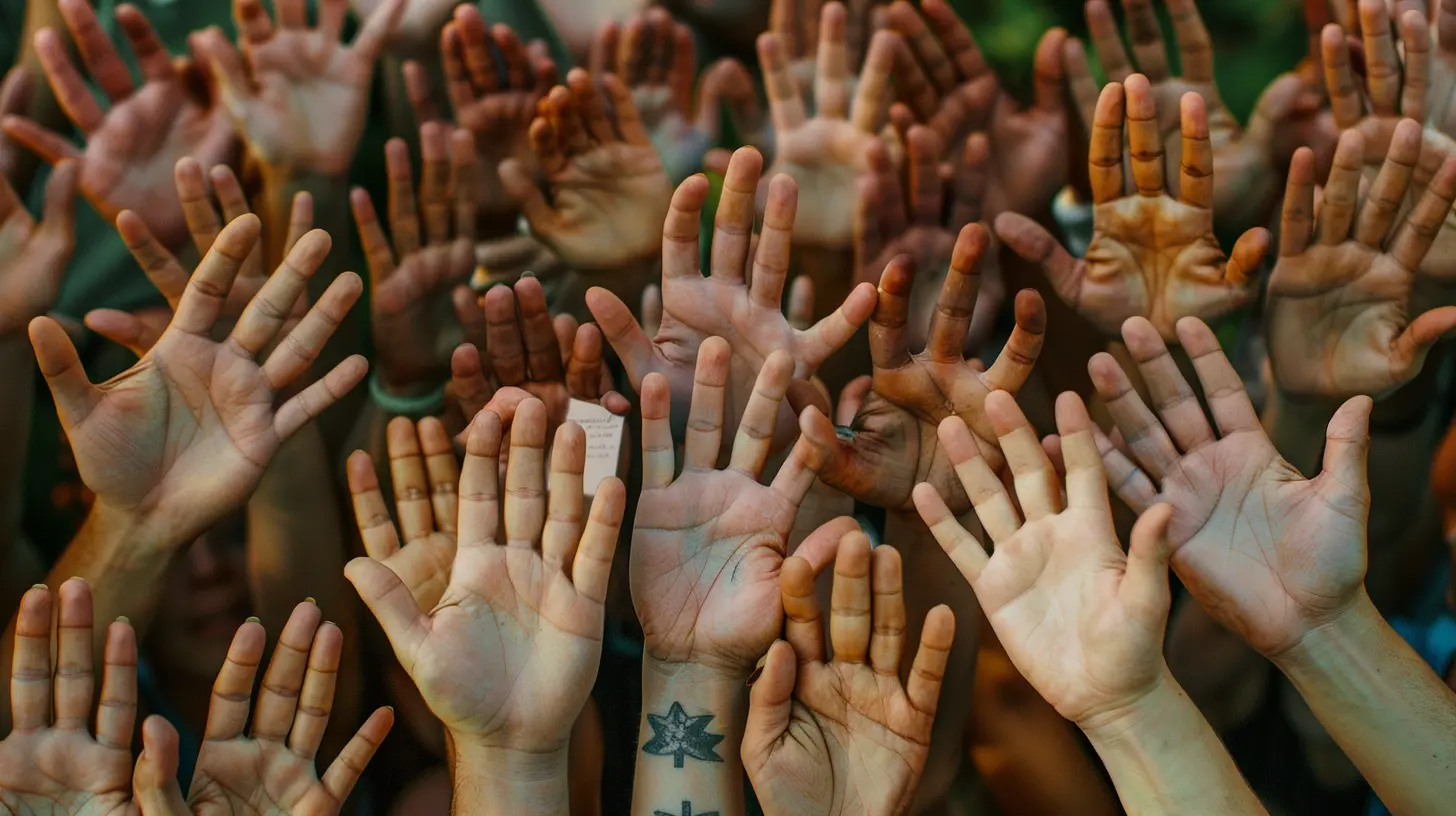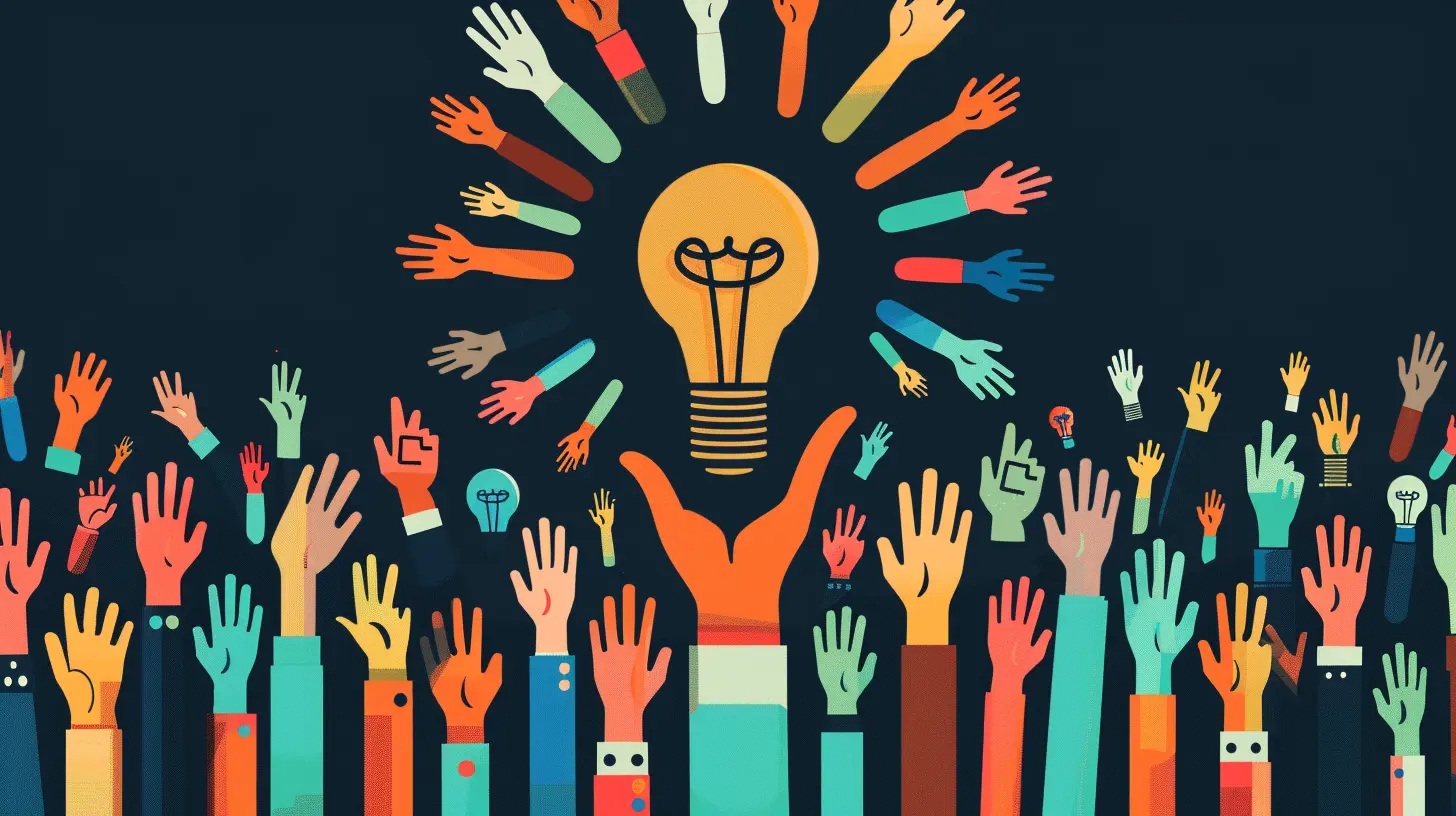Crowdfunding for Social Good: Leveraging the Power of Community
13 July 2025
Let’s be honest—changing the world sounds exhausting, right? Between juggling work, social life, and trying to figure out what’s for dinner, who has time for saving the planet?
But here’s the twist: You don’t need a cape or billionaire bank account to make a difference. Nope. All you need is an idea, a laptop (or phone, hey, we’re not picky), and a community that’s ready to rally behind something meaningful.
Welcome to the magical, sometimes chaotic, always impactful world of crowdfunding for social good—where pizza-fueled brainstorming sessions and passionate storytelling collide to shake up the status quo.

What The Heck Is Crowdfunding for Social Good?
Alright, let’s break it down—imagine crowdfunding as passing a virtual hat around the internet. People toss in a few bucks to support a cause they care about. Multiply those contributors by hundreds (or thousands!), and boom—you’ve got enough moolah to kickstart a project, build a school, plant trees, or fund therapy dogs for crayon-eating toddlers (it’s a thing, probably).Now, “for social good” just means the goal isn’t to get rich (sorry, no Lamborghinis here), but rather to create something that benefits people, communities, or the planet. It’s not about profiting—it's about uplifting.
Think climate change campaigns, clean water projects, community gardens, educational tech for underprivileged students, or helping local shelters survive inflation like the rest of us ordinary mortals.
Sound cool? Yeah. It's VERY cool.

The Crowd Behind the Funding: Why Community Is Everything
Ever tried shouting into the void? That’s what it feels like to launch a crowdfunding campaign without a community. You could have the best idea since sliced sourdough, but if no one hears it, it's game over.When you rally your tribe—friends, family, strangers on the internet with big hearts—you create a movement. It’s like assembling the Avengers, minus the CGI budget.
People don’t just fund ideas. They fund stories, they fund people, and most importantly—they fund hope.
Why People Open Their Wallets (And Their Hearts)
So, why do people back these campaigns?- They believe in the cause.
- They want to be part of something bigger than themselves.
- They like warm fuzzies (and sometimes tote bags).
- They trust YOU.
Spoiler alert: The trust part is the golden nugget in this social-good sandwich. Be authentic. Be transparent. And remember—people can sniff out fakery like dogs sniff out peanut butter.

The Secret Sauce: Building an Emotional Connection
Want to get folks on board? Make ‘em feel something. Seriously.Stories move people. Stats? Eh, they might impress. But stories? They inspire. You could say, "1 in 3 kids in this village don't have clean water." Or you could say, "Meet Maya. She walks 4 miles every day to carry water in a bucket that's bigger than her backpack."
Boom. Now we're talking heartstrings.
Give Your Cause a Face
People connect with people. Not logos. Not slogans. Show the faces, the voices, the real-life impact. Let your audience see what’s at stake. Give them a reason to care, and better yet—a reason to share.Yes, we live in the age of scroll-and-forget, but your story, if told right, can stop thumbs in their tracks.

Choosing the Right Platform (Spoiler: It’s Not MySpace)
Not all crowdfunding platforms are created equal. Some are like luxury cruise ships—shiny and expensive. Others are like canoes—simple, no frills, but they get the job done.Here are a few popular ones catering to causes:
- GoFundMe – The king of personal and social good campaigns.
- Kickstarter – More product and creative project focused, but can work for impact-driven stuff.
- Indiegogo – Flexible funding options, good for techy or innovative causes.
- Fundly – Designed with nonprofit and community causes in mind.
- Chuffed – Specifically built for social enterprises and nonprofits.
Pick the one that fits your vibe and project. Make sure to read the small print so you don’t get surprised by fees that sneak up like a Netflix subscription.
Setting a Goal That Doesn’t Make People Gag
You want to raise $100,000? Cool. But let’s make sure that number doesn’t make potential donors clutch their pearls and run.Your goal should be:
- Feasible – Realistic goals build trust.
- Transparent – Break it down. Where’s the money going?
- Urgent – Give people a reason to act NOW. That sense of FOMO? Use it.
Want to save sea turtles? Tell people exactly how $10K creates hatcheries long enough to outpace TikTok trends.
Pro Tip: Start Small, Scale Smart
Setting a smaller, reachable first goal boosts momentum. Once you hit it, stretch goals feel like victory laps. It’s like leveling up in Mario Kart—only instead of banana peels, you get happy supporters.
The Art of the Ask: How to Actually Get People to Contribute
Let’s face it—asking for money is awkward. But it doesn’t have to be if you keep it real.Here’s what works:
- Be clear – Tell people what you're doing, why you’re doing it, and what you need.
- Be human – Talk like you're chatting with a friend. Ditch the corporate speak.
- Be specific – “$25 feeds a family for a week” hits harder than “Every dollar helps.”
- Be grateful – Even if someone only gives $5, treat them like a boss.
Don’t Just Ask—Engage
Start conversations. Post updates. Share behind-the-scenes moments. Celebrate milestones. Say thank you more often than your grandma at Christmas.Treat donors like part of your team—because they are.
Social Media: Your Mega Microphone
You knew this was coming. Social media is your campaign's BFF. Instagram, TikTok, Twitter, Facebook—wherever your people hang out, that’s where you’ve gotta show up.But don't just spam links. That’s not cute.
Instead:
- Tell stories - Remember Maya and her water bucket? Yeah, more of that.
- Use video – People love faces and voices.
- Ask questions – Get folks talking.
- Tag and hashtag like a champ – Help new eyeballs discover your cause.
And don’t forget to post consistently. Crowdfunding isn’t Vegas—you can’t just show up once and expect fireworks.
Collaboration: The More the Merrier (and More the Money-er)
If you're flying solo, you're gonna run out of steam. Crowdfunding is a marathon wrapped in a sprint, with a side of juggling.So ask for help. Partner with influencers, local businesses, or that person in your friend group who still uses LinkedIn (they’re probably useful).
Even better? Collaborate with others working toward similar goals. Share audiences. Build bridges. Spark joint campaigns. It’s synergy, baby.
Reward Systems: Gimmicky or Genius?
Ah, rewards—the cherry on top of your altruistic sundae.Some folks offer t-shirts. Others go digital with thank-you videos or downloadable art. Some just keep it simple with a heartfelt thank-you.
Here’s the trick: Match your rewards to your audience AND your cause.
Don’t offer plastic swag for an environmental campaign. And don’t blow your budget on rewards if you're raising for emergency relief.
When done right, rewards can:
- Encourage bigger contributions
- Keep people engaged
- Give folks a physical reminder of the impact they made
And if you’re panicking about what reward to offer? A personal thank-you note will never go out of style.
The “After” Party: Accountability & Gratitude
Your campaign's funded? Woohoo! But don’t ghost your donors like an ex on Valentine's Day.This part matters.
- Send updates. Let people know how their money’s being used.
- Celebrate progress.
- Share final results—even if things didn’t go perfectly (because #reallife).
Trust is like a plant. Water it. Don’t toss it after the first bloom.
Transparency + gratitude = long-term supporters.
And who knows? Those same people may be your biggest cheerleaders for your next campaign.
A Few Epic Real-Life Wins (Because Yes, This Stuff Works)
Need a reminder that crowdfunding for social good is more than wishful thinking? Check out these wins:- A high school student raised over $100,000 for PPE during the pandemic.
- A community started a fundraiser to convert unused land into a neighborhood garden.
- One small organization crowdfunded enough to build classrooms in a rural area—where kids had been learning under a tree.
These weren't mega-orgs or celebrities. Just regular humans. With big hearts. And Wi-Fi.
Final Thoughts: You Don't Need Millions to Make a Difference
If you take one thing from this article, let it be this: You already have what it takes to spark change.It starts with a story.
It grows with community.
It thrives with heart.
So rally your people, build your idea, and trust that when folks come together—even in small ways—big things happen.
Heck, you might just end up changing the world. One post. One share. One dollar at a time.
all images in this post were generated using AI tools
Category:
CrowdfundingAuthor:

Ian Stone
Discussion
rate this article
1 comments
Candace McKeehan
Excellent insights on community impact!
August 2, 2025 at 3:54 AM

Ian Stone
Thank you! I'm glad you found the insights valuable!


